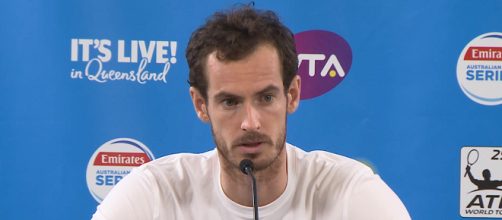By now, it should be clear for most of us that the former world No. 1 Andy Murray has got into the last chapter of his career as a professional tennis player. A highly-skilled player who possesses a unique work ethic, the Brit tennis star is still off the board and he's expected to return just in time for the grass court swing, although there is no official comeback timetable.
After missing the entire second part of the 2017 season, the two-time Wimbledon titlist tried to get rid of his medical condition by opting for a harmless strategy. Therefore, he chose complete rest and lack of activity hoping that the injured hip would recover in a more natural way.
As it turned out, it wasn't enough as he lacked the ability to compete at an ATP level. After his decision to pull out of the 2018 Australian Open, he immediately underwent reparatory surgery on the damaged hip section.
How did Andy Murray end up being caught in this rough spot?
Aged 30, Sir Andy Murray's name stood at the top of men's tennis for nearly a decade. Although some injuries occurred in recent years, none of them was as brutal or concerning as the current hip issue.
It may be a thread of bad luck although the vast majority of tennis fans tend to correlate his medical condition with his playing style. A baseliner by definition, Murray is a player who can win a match by simply seeding doubt into his opponent's mind and by forcing them into making an error.
But, it's that specific grind that takes a huge toll and if we dig deeper, some similarities would occur in other players like Djokovic or Nadal. As Murray, these two also made their legacy mostly by dominating a tennis match from the baseline. And, from all what we have seen recently, it seems like their biggest weapon turned into a liability once the body grew older and it was no longer in a position to sustain such physical demands.
It's quite the opposite of Roger Federer who reinvented himself applying a different strategy. With a tendency to rush the points, the Swiss has encountered great success during the last year or so. When Murray, Djokovic, and Nadal were at the peak with their grind, Federer had little success.
Murray has to adjust to the new slot he finds himself in
The Brit is currently ranked 20th in the world, but that's just a passing status. He will drop most of his points if not all, by the time he starts mounting a comeback. On the other hand, some people might find the current situation of men's tennis to be quite interesting. In-between the top 10 and top 30 a lot of well-known players are currently trapped. Djokovic, Wawrinka, and Murray are leading the pack, but the likes of Nishikori, Raonic, Tsonga or Berdych are also navigating their way throughout the meanders of uncertainty.
The same uncertainty concept is what governs Andy Murray for the time being. It will be quite interesting to keep a close eye on how the situation unfolds for the former world No.1. Moreover, a premature ending to his professional career is something that may happen.


